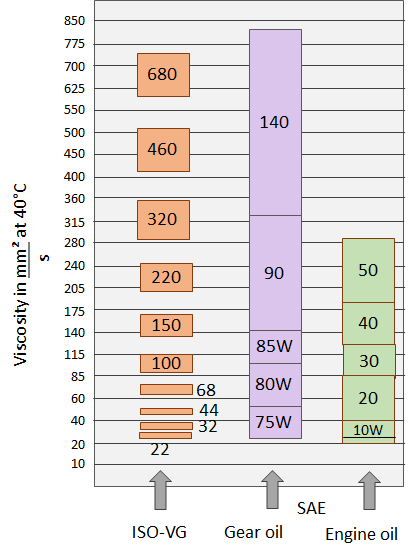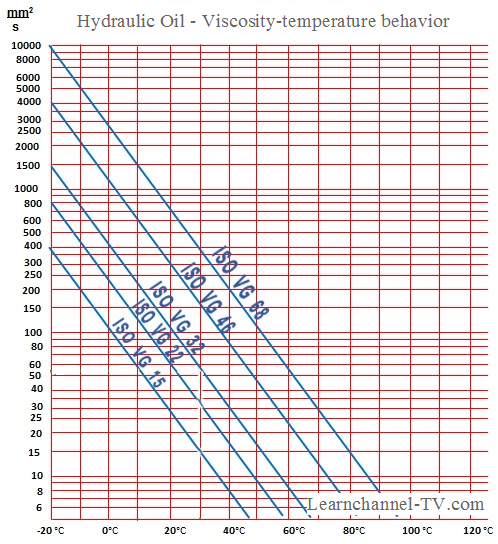Home ⇒ Overview Courses ⇒ Hydraulics ⇒ Hydraulic power Unit ⇒ Hydraulic oil
Hydraulic oil
The working medium in hydraulics is a fluid which has to fulfill several tasks:
- Generation of forces and movements by means of actuators
- Lubrication of components
- Favorable viscosity-temperature behavior (VT behavior)
- Ageing stability
- Removal of local heat
- Removal of abrasive particles
- Good air separation behavior
The most important characteristic value of a hydraulic oil is its viscosity ("toughness") in mm2/s. In colloquial: "It describes the thickness of the liquid." The higher the viscosity, the thicker the fluid. Or: the lower the viscosity, the higher the fluidity.
The viscosity can be illustrated with a simple experiment: A sphere of the same size and mass sinks significantly less in a liquid of high viscosity than in a liquid of low viscosity.

Hydraulic oil - Comparison of viscosity by drop times in liquids

Comparison - Viscosity of hydraulic oils
Industrial oils are divided into 18 viscosity groups (ISO-VG), which refer to 40 °C. Usually the viscosity groups 22 to 100 are used:
- VG 22 for arctic conditions or for extremely long cables
- VG 32 for winter conditions in Central Europe
- VG 46 for summer conditions in Central Europe or for closed rooms
- VG 68 for tropical conditions or for rooms with strong heat accumulation
- VG 100 when excessive heat is generated
Remark: Automotive oils are marked according to the American Society of Automative Engineers (SAE). The marking does not correspond to the ISO classification. In addition, the reference temperatures are also different.
Viscosity and temperature:
Unfortunately, the viscosity of a liquid also depends on the temperature. As the temperature rises, the viscosity decreases significantly, i.e. the hydraulic oil becomes thinner. Another reason for using coolers in larger hydraulic systems. The VT - characteristic curve of mineral oils shows clearly this decrease in viscosity as the temperature rises.

Hydraulic Oil - Viscosity-Temperature behavior
Work order - Viscosity
The optimum operating viscosity for an axial piston pump according to the manufacturer's specifications is 50 to 100 mm2/s. What is the operating temperature range when using ISO VG 32 oil?

Hydraulic Oil - work order solution
Read from diagram:
Temperature between ca. 20°C and 32°C

